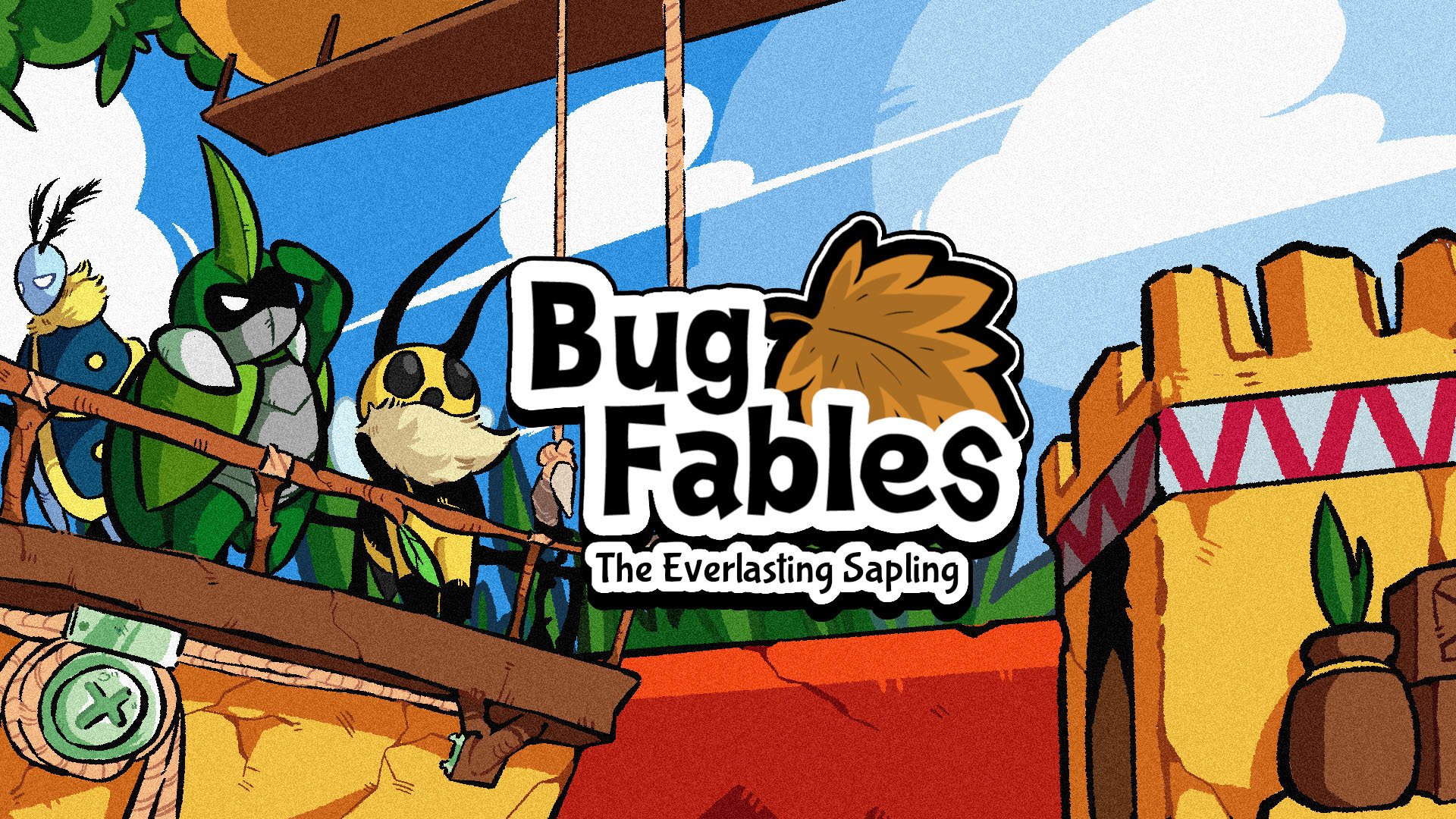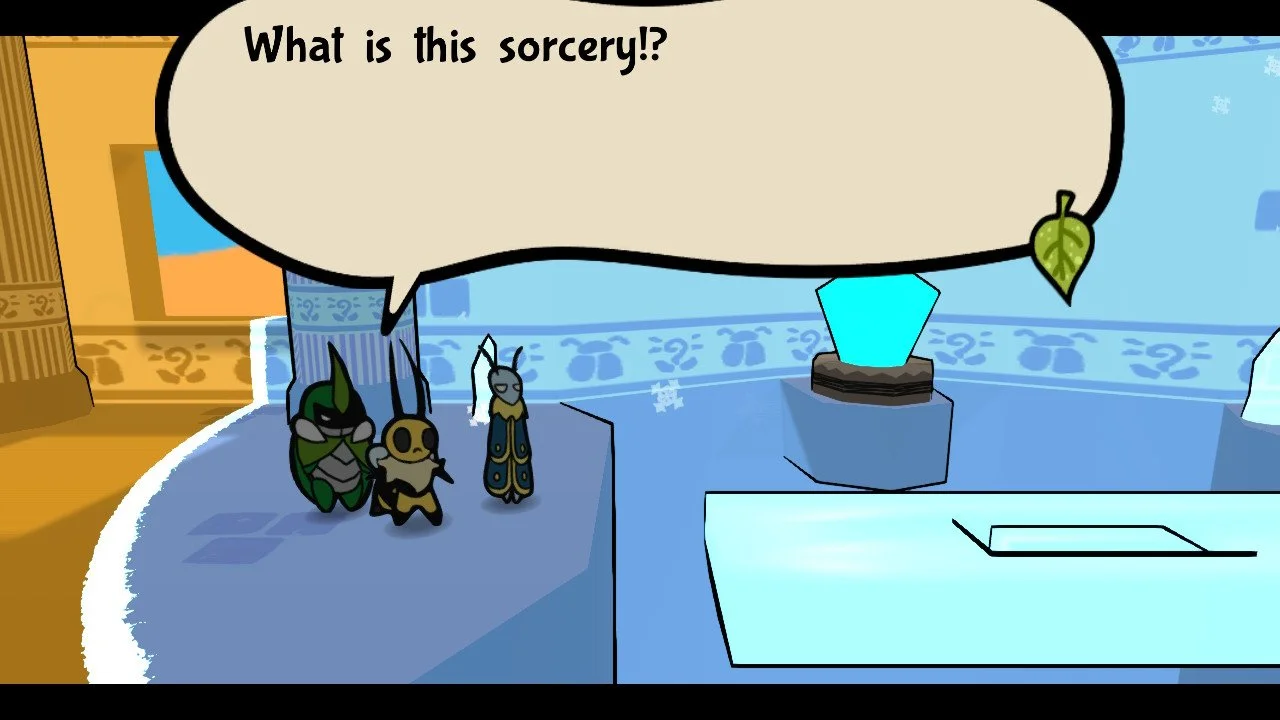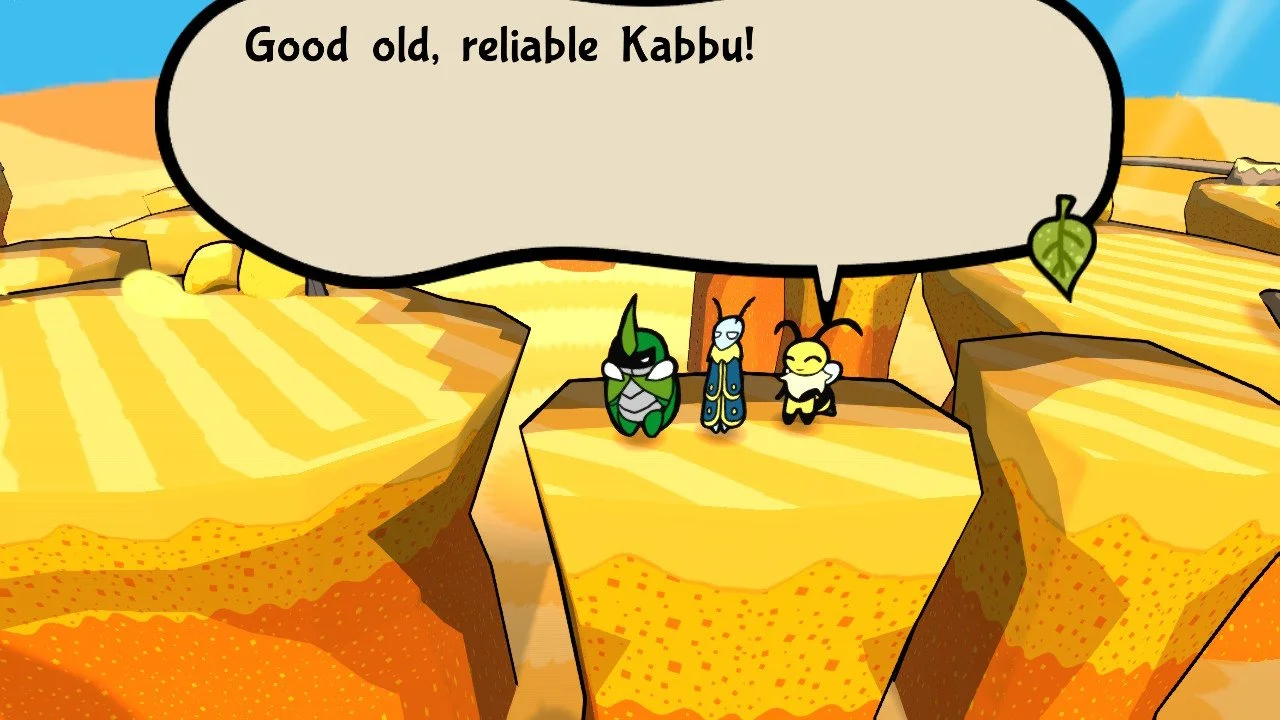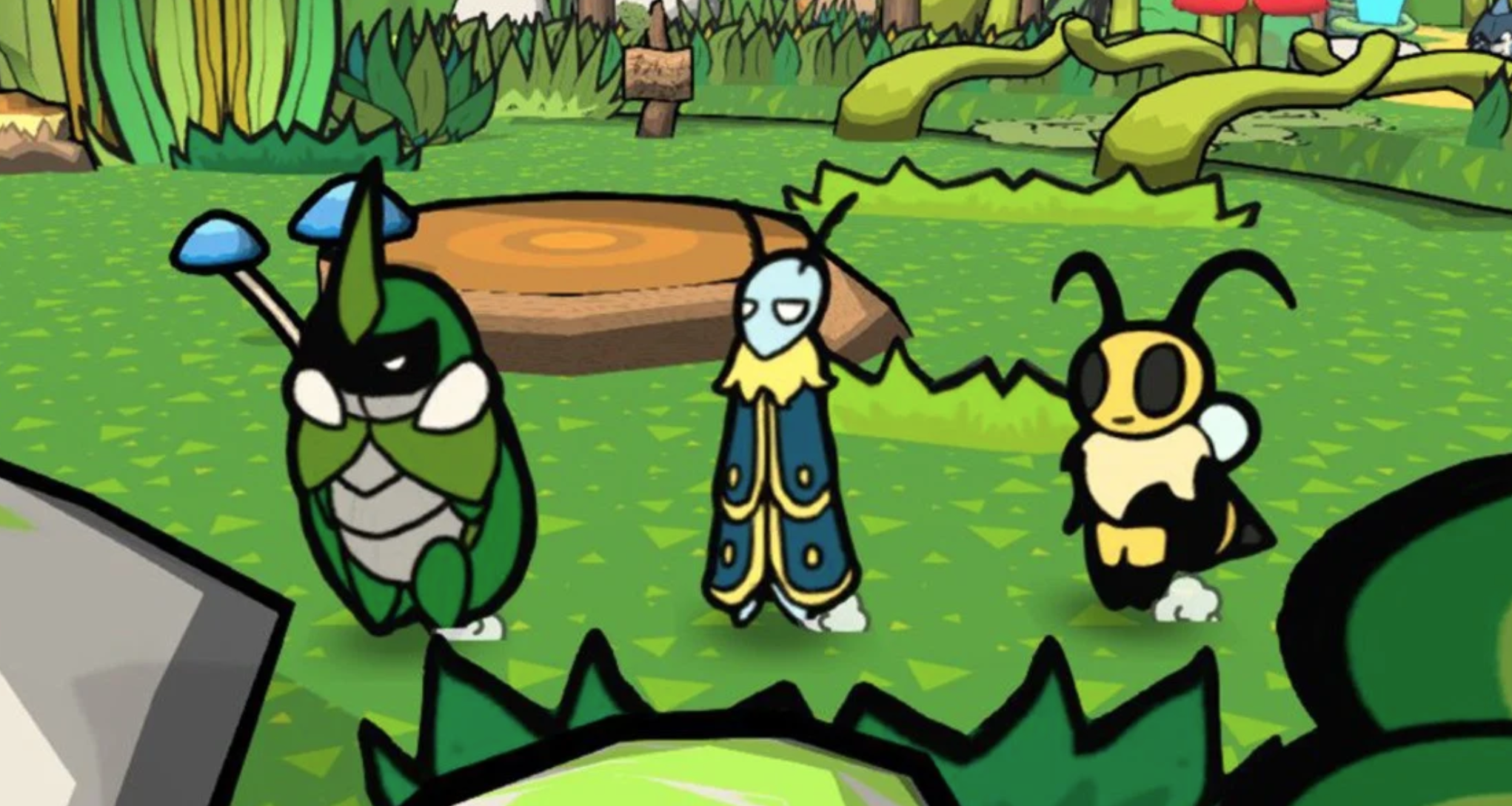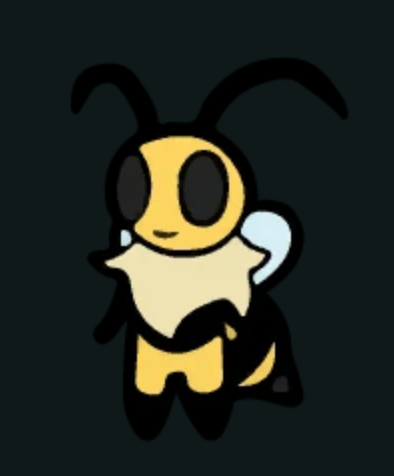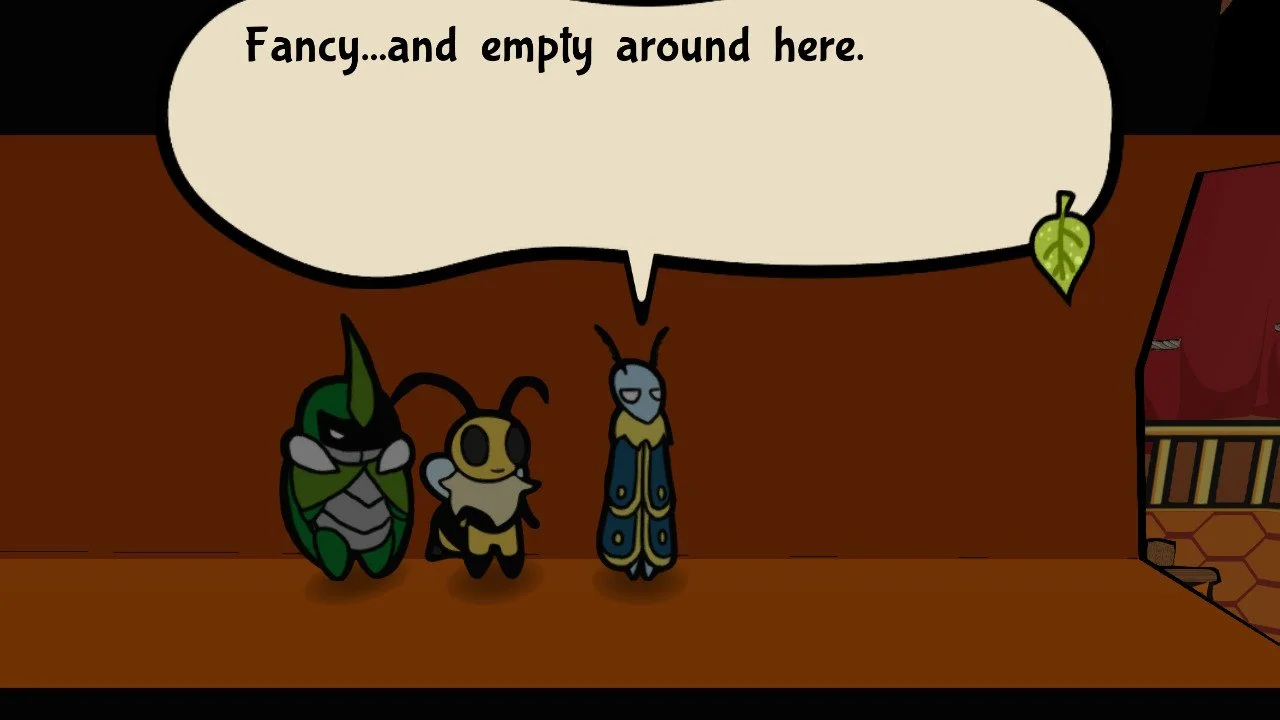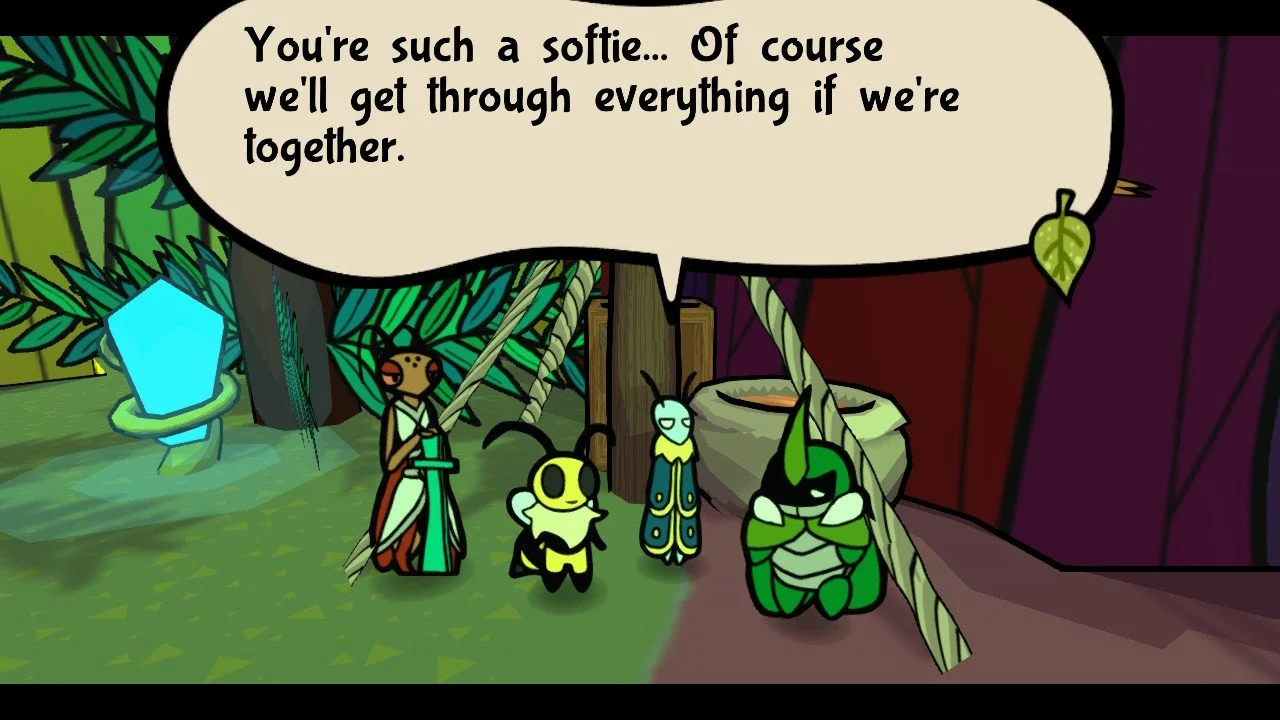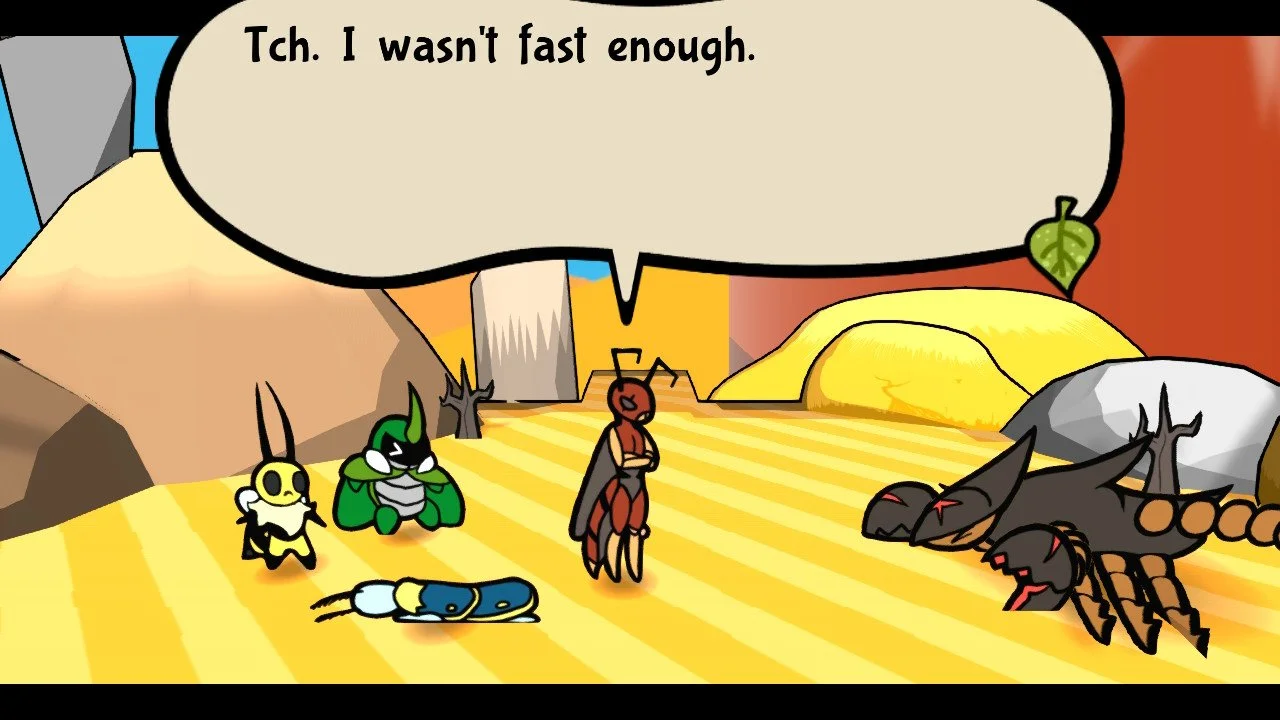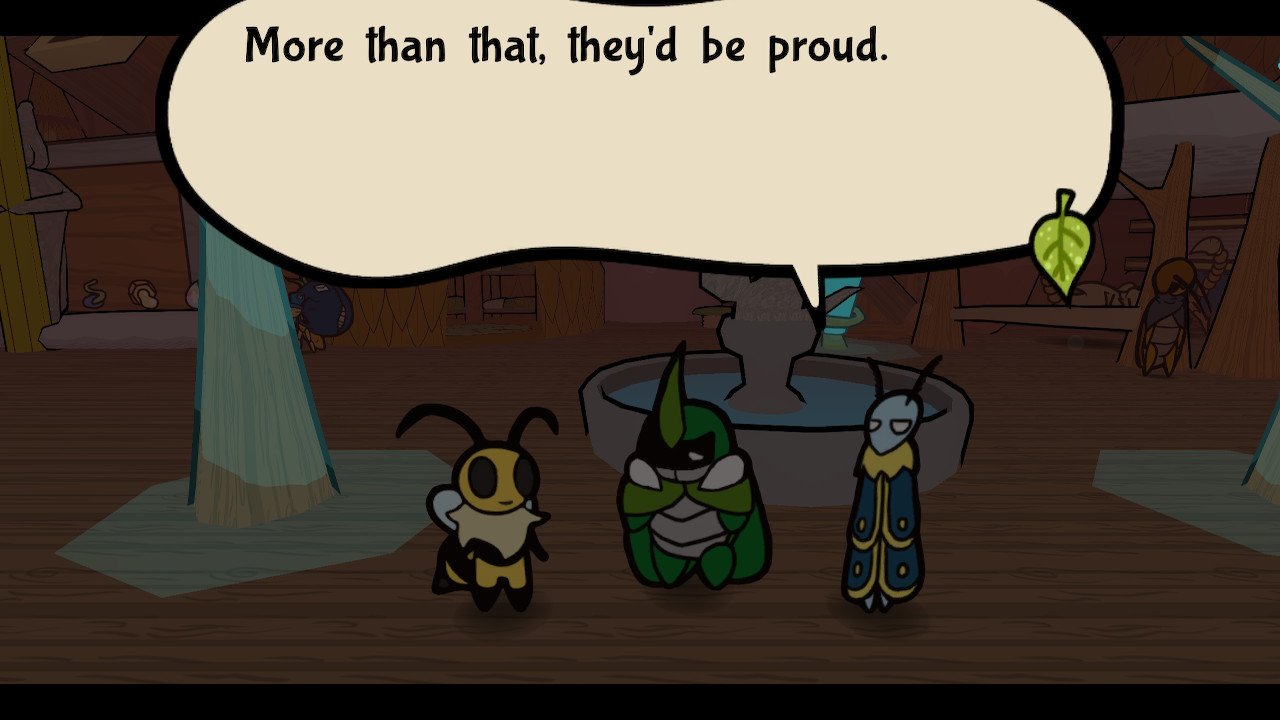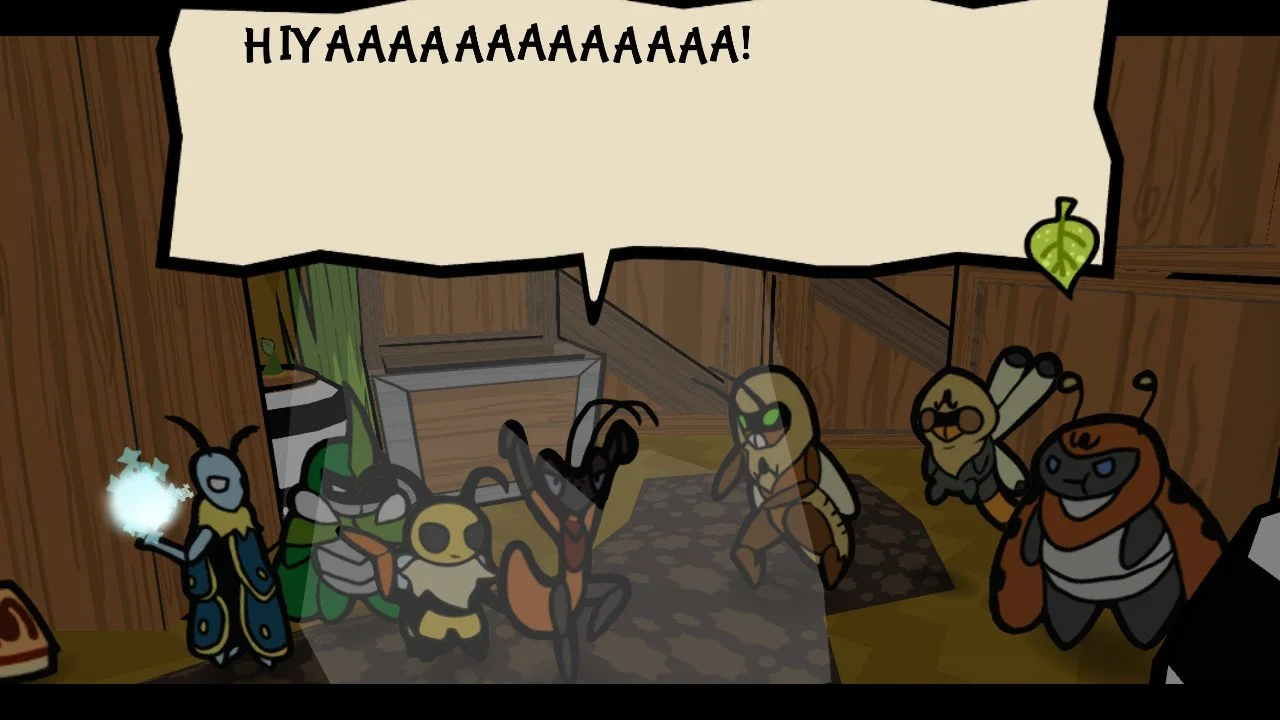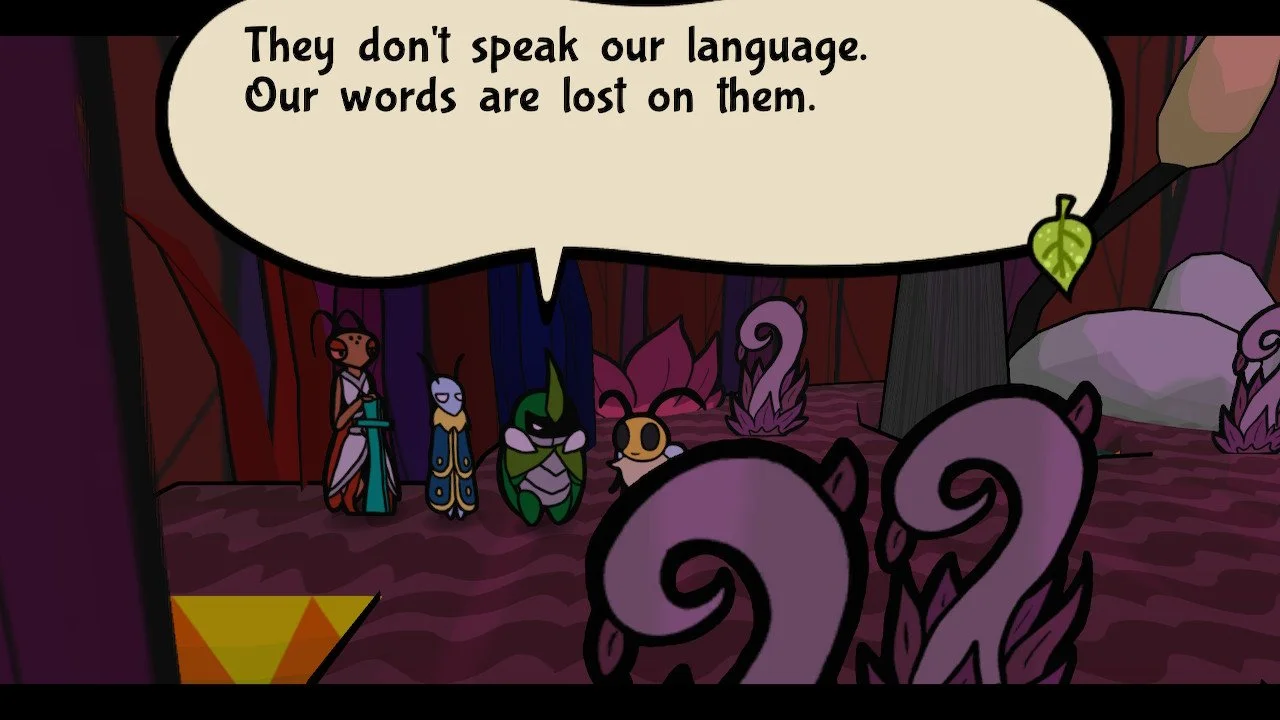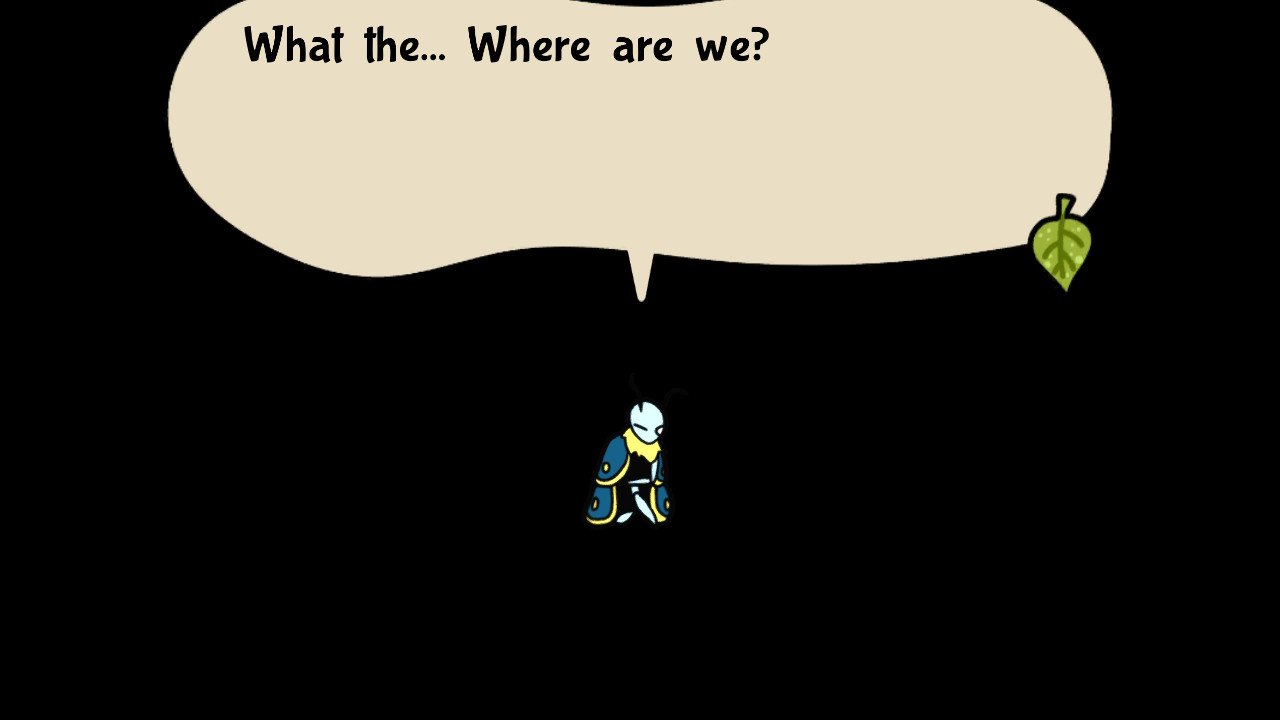Bug Fables Shows Why Paper Mario is Special
Michael Scott
It’s about the implication.
If you’re an indie gamer, a fan of cute stuff, or a Switch owner who has even the most tenuous connection to the gaming scene, you’ve probably heard of the indie darling RPG “Bug Fables”. Touted as the spiritual successor to the original Paper Mario duology, Bug Fables isn’t the first “bug” game to come out in recent memory and attempt to steal everyone’s hearts. However, it is the first Paper Mario-styled game to make any sort of notable splash in the scene.
In recent times the community has seen an up-welling of “spiritual successors” to Nintendo games by third-party studios. These are uniformly touted as versions of the games that the fans want, and that Nintendo is unwilling to give. Whether it's supporting a competitive scene (Rivals of Aether), a visual style (Wargroove), or to update an aging franchise (Nexomon), Bug Fables is posed to fit neatly into this growing niche of “If you want something done right, do it yourself” genre of games.
That being said, let’s talk about what makes Bug Fables: The Everlasting Sapling WORTH PLAYING. Might as well start with the positive, right?
Well, first things first, it’s CUTE. Yeah, I know that seems like it might not be worth bringing up, but I think that the art for this game does it a big service. That cuteness covers a lot of flaws that would’ve been far more grating had the game lacked this sheen of adorability. The setting is classic “small guys, in a big world” that we’ve seen in tons of games before from Pikmin to Bugdom, but the Bug Fables world is distinctly restricted. It feels small, despite wanting to feel big, and most of the areas, regardless of being indoors or outdoors, feel as though they’re taking place in a room with very defined boundaries.
The character art is really the standout here and Kabbu the beetle is the star of the show. He and the other beetle characters have a power rangers motif that’s uniquely endearing and raises them above the rest of the cast. Leif the moth (looks more like a mantis, but whatever) is also cute, but in a more subdued way. And Vi the bee (which apparently is pronounced Vy, but that’s dumb) is a stumpy-cute little bumble bee who’s fled her hive for adventure.
We Three Kings
All of the NPCs are marvelously detailed and varied and even the generic townsfolk are charming to look at, even when they rarely have anything interesting to say. Doubley surprising when I discovered that a handful of the NPCs are kickstarter-inserts. The fact that these non-artist-designed characters blend in and embellish the world greatly is a wonder. The same does not really extend to the enemies. Most of them are generic and look to have been scribbled as drafts and never updated, though there are some exceptions. Actually, despite Vi being the de facto lead character she shares this trait as well. None of the other “Bee” characters have this issue. My suspicion is that the character artist designed Vi first, and then didn’t bother to redraw her after the game was incorporating more complex and interesting character designs. She looks like a prototype.
And this is where I first want to mention Paper Mario. The game’s art style is buggy, but both its world and characters are designed to look as though they’re folded from paper. It’s adorable, but unlike Paper Mario it doesn’t really serve any mechanical purpose. As the Paper Mario games have gone on they’ve included more and more features that embrace the art style as part of the gameplay. Mario turns into a boat, turns sideways to slip through jail bars, and folds himself into a plane to glide. At time of writing, I’ve noticed none of these features in Bug Fables. While justification for the art style isn’t required to make any game fun, it reeks of cargo-cult thinking. They copied a facet of Paper Mario without any appreciation for why it was done in the first place. And while I go back and fourth on this thought, I think that if you’re going to basically copy a 20 year old game, the least you could do is more than the bare minimum, especially when' you’re no longer restricted by N64 hardware.
And back to that mention of Vi looking like a rough draft character design, Paper Mario certainly had a larger team and a bigger budget, but the character designs, while cute, are inconsistent. Paper Mario (at least in the first two games) is incredibly consistent in terms of art quality. There are no characters that look out of place unless they’re designed to be intentionally weird looking, like some of the robot and magical characters.
Before I get too far into this review, I wanted to talk about the combat. The combat in Bug Fables is pretty much a carbon-copy of the combat from Paper Mario, no surprises here. Except that, like most of Bug Fables, it lacks the polish that Paper Mario’s combat encounters generally had. Even on the standard difficulty, most enemies are much too tanky to be trivial, and by the time the player’s bugs are strong enough to do large amounts of damage in a single turn, enemy XP output plummets, rendering fights pointless. This is why the game has a “Skip Weak Fights” badge, but why isn’t this just an automatic feature like in Earthbound?
I stop short of thinking all games should have menus upon menus of features and adjustments for each player’s style, but I think that this a common sense inclusion. I’d say “this isn’t the 90s anymore, we should be doing better.” but Earthbound came out in 1994.
Unfortunately this describes a lot of the Bug Fables experience. Fancy and Empty.
Oh, and when I say badge I mean medal because the game has to give everything a slightly different name. We don't want to be too transparent with our transparent rip-off. The medals are equipment items that augment the abilities of the player’s bugs in the game. It’s a fine idea, but the game is very stingy with the good ones. And some of them are straight-up confusing when you first find them, such as the “Weak Stomach” medal, that poisons a the player’s characters if they use healing items. It doesn't really make a lot of sense until you get an additional badge that gives a character a combat boost if they’re poisoned.
But the problem here lies in the combat itself, it’s not that these little additions aren’t interesting, especially during the boss fights, but it’s that combat is generally not that fun. It renders these interesting strategies pointless because the best strategy in every fight is to use Leif’s “Break” ability and then hammer the enemy with defense-piercing attacks.
It becomes redundant fast, and even the game’s cute art style fails to make combat interesting. By the time the player reaches the end game they are so tired of the combat they’re fleeing from fights, not out of convenience, or to save resources, but simply to avoid the boredom of fighting the same walls of enemies over and over. This is magnified by the game’s lackluster soundtrack which, by my count, features precisely a single memorable track out of a OST featuring over 80 songs and jingles. Luckily enough the song “Transcending, Overpowering, Everlasting” is Bug Fables’ final boss theme. It’s pretty great, and it really supports what is also the game’s best fight. No other boss fight or combat encounter even comes close to being as interesting or compelling, and I think this is in large part due to the soundtrack that really amplifies the drama. I only wish that the care and passion that clearly went into this track was spread around to the rest of the game’s music. Everything from combat to area music is dull and forgettable for the majority of the experience. We have to, once again, return to Paper Mario for the sake of comparison. Now while Paper Mario isn’t perhaps known for it’s soundtrack compared to games like Super Mario World, Sunshine, or Super Mario 64, it still has its fair share of bumping, fun tracks that keep the game moving. Bug Fables lacks this sorely.
But the biggest offenses that BF commits are its puzzles and terrible quest design. Way too much of the game’s progression relies on the player knowing where to go and when to go there without any hints or clues. Long gone are the days where a game can get away with calling itself an “Adventure” simply by making progression akin to pulling random numbers out of a hat. I might even argue that this style of trial and error adventure game has NEVER been fun, but that’s a hot-take for a different day.
If this map looks like it could’ve been figured out easily remember that every single square of this map is almost exactly the same, with the same details, same enemies, and only certain directions that the characters can move in.
The desert area is especially bad in this regard, not only because it’s effectively a treasure hunt, but every area looks nearly identical and there’s no area maps in the game. Unless you get out a pen and paper and map it yourself the player is navigating blind. There were multiple occasions, both during and outside of quests, where I had to look up a walkthrough simply to understand the lay of the land. In a game where you can insta-kill enemies who are lower level than you, but frequently have to backtrack anyway, the fact that there’s no fast-travel system is excruciating. This isn’t Dark Souls, the journey isn’t the experience, the destination IS.
And those puzzles? They range from being trivially easy, and barely qualifying as puzzles, to being entirely based on the games suspect hit-detection. Especially bad are the puzzle that require platforming or the use of Vi’s boomerang. The former is bad because it’s a 2.5D game that demands precise jumps. 2D characters doing platforming on curved 3D platforms is a nightmare. The latter causes issues because the boomerang item is so finicky when it comes to actually hitting its target that it creates scenarios where the player remains stuck at a puzzle they solved five minutes ago, because the game’s hit-detection is so poor.
I have no issue making progression in a video game tied to execution. But not when it comes to puzzle solving. Once the player figures out where all the pieces go, they should be allowed to drop them into place. But for Bug Fables the strings that hold the game together get tangled and prevent progression on a regular basis and that’s just too bad.
This is another regard in which Paper Mario’s polish shines above. While there are, on occasion, areas in Paper Mario that feel little confusing, it’s usually as simple as “Oh, I missed a door”. In Bug Fables, the nonlinear nature of the game is stifled by the game areas not being fun to explore, and the characters in the world not being fun to talk to. Most of them lack the charm of Paper Mario characters who all have a huggable cartoony goofiness to them. Bug Fables Characters in comparison are pokey, and unlikeable, with many being straight-up mean spirited or annoying.
The playable characters are good, but the other characters, are hit and miss. Mostly miss.
Speaking of playable characters, there are only three of them. For a game that spends so much time aping another more successful game, BF leaves one major component out and that is recruiting new characters as part of the plot. The five or six partner characters in the original paper Mario are replaced by just three main bugs which share the role of lead character. Not a bad idea in and of itself, but it kind of goes against the spirit of the simplified JRPG that Bug Fables is trying to evoke.
In terms of its problems, Bug Fables has much in common with another indie darling, Shovel Knight. But where Shovel Knight’s problems lie in its thesis, Bug Fable’s issues are exclusively with its execution. There are no bad ideas in BF, largely because it’s a loving knockoff of a better game, but those ideas aren’t always executed in a satisfying way. And the presence of many of these good ideas, make the absence of no-brainers like fast traveling and area maps even more apparent.
I genuinely hope we get a sequel, one with more playable (recruitable) characters, improved balance, better writing, and better music. Developer Moonsprout Games seems to consist of only a handful of people and this is likely the root of every single one of the game’s shortcomings. Making a game good is really hard. Studios with hundreds of people and millions of dollars sometimes can’t do something half as good as what Moonsprout did, so I don’t want it to seem like I’m dumping on the hard work of a few passionate people. I just hope that for Bug Fables 2 they put in a little more elbow grease and really polish the game till it shines like the back of a jewel scarab, because Bug Fables doesn’t. (But it totally could!)
The more I think about it, the more I realize the greatest triumph of Bug Fables was showing me how much I love Paper Mario. I love it so much that I’m willing to put up with mediocre combat mechanics, unbalanced gameplay, droll and confusing quest layout, and uneven art in order to just get a taste of a game I loved as a kid and recently revisited as an adult on the Wii U. It also highlights that I’m far from being alone in this feeling. There’s clearly a massive community of gamers who grew up playing Nintendo’s best from the mid-90s to mid 2000s, and the fact that the company as a whole seems to want us to forget those years existed is really a travesty.
Bug Fables isn’t bad, but it’s in disguise. It’s a 6/10 game wearing the skin of a 9/10 game. And much like the Leaf Bug or the Flower Mantis I only began to see through that disguise once I started spending time with it.
But you should go buy Bug Fables, anyway!
